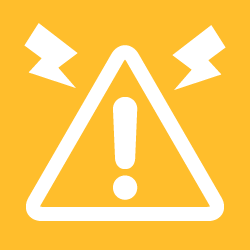5-3 Professional advice
If there is a large temperature difference between the room where the fume hood is installed and the outside, the air discharged from the fume hood may be cooled by the duct route, resulting in condensation.
It is particularly likely to occur in cold climates, ductwork with low thermal conductivity are being used and measures like heat preservation are being taken.
This phenomenon is more likely to occur in experiments involving boiling hot water or heating/evaporation.
As this case happens as a natural phenomenon, it cannot be said to be caused by the fume hood.
Equipment improvements, or equipment features that can collect water droplets are necessary.
On the other hand, in models with a built-in scrubber on top of the fume hood, liquid may leak due to clogging of the scrubber or breakage of the packing.
5-3 Advice for
Initial support/correspondence
If you discover liquid dripping or water leakage, immediately determine the cause.
Consult with the laboratory manager or the facility administrator and investigate the cause.
Wear suitable protective equipment and exsercise caution when working.
If the cause cannot be determined, consult with an inspector or fume hood manufacturer.





